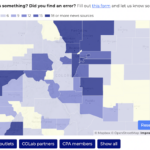Asian-American Pacific Islander students are not all alike. The funds will help support different AAPI communities.
By Carla Herreria, Senior Writer, HuffPost Hawaii —

The hope is that the study of Asian-American Pacific Islander students will address barriers to achievement. TOMWANG112 VIA GETTY IMAGES
The stereotype that all Asians are A-plus students may sound like a compliment, but that rosy generalization puts a lot of Asian-American Pacific Islander subgroups at risk of being overlooked when it comes to federal funding and resources.
In an effort to address that, three states with large Asian-American Pacific Islander populations ― Minnesota, Hawaii and Washington ― will receive a combined $836,000 to study AAPI students and try to close achievement and opportunity gaps between the various AAPI subgroups, the White House announced Monday.
The federal grants, which President Barack Obama’s administration worked to establish, will help the states’ educational agencies break down data on AAPI communities and clarify disparities between the subgroups to help dispel that overarching Asian myth.
AAPIs “have too often been subjected to the model minority myth, the notion that they are all successful, educated, and self-sufficient, which has masked unique needs of AAPI subgroups,” Doua Thor, executive director of the White House Initiative on AAPIs, said in a news release.
The funding is projected to address perceptions, negative and positive, that affect 1 million students in the three states, according to the White House.

The word cloud illustrates the diversity of the AAPI communities. WHITE HOUSE INITIATIVE ON ASIAN AMERICANS AND PACIFIC ISLANDERS
AAPIs are the fastest growing racial group in the U.S. and make up the largest share of recent immigrants. They represent 30 countries and ethnic groups that speak more than 100 languages.
The model minority myth, which suggests all Asians are bound for academic and occupational success, has prevented some AAPI communities from benefiting from federal funding and resources, U.S. Secretary of Education John B. King said in May. The challenges, he said, are as “diverse as their communities.”
Although current data show AAPI students as a whole tend to be among the highest achieving in the U.S., some subgroups face academic and occupational challenges that are often overlooked under that broad AAPI banner. Indian-Americans, for example, tend to have higher educational success than Samoan-Americans, and there is higher unemployment among Filipino-Americans than there is among Japanese-Americans.
The initiative will allow state educational agencies to learn more about these subpopulations, beyond the seven racial and ethnic categories recognized in schools.
Christopher Kang, national director of the National Council of Asian Pacific Americans, applauded the White House for the grants, describing the funding as “incredibly significant in addressing barriers to achievement.”
“The needs of AAPI students are far too often unknown and unfulfilled,” Kang said in a statement.
The grants are part of a program the White House announced in May, the AAPI Data Disaggregation Initiative, under which states can receive up to $1 million per year for five years to keep better track of the diversity in cultures, languages and educational challenges in the AAPI community.
It was unclear how much each state would receive with this grant.










